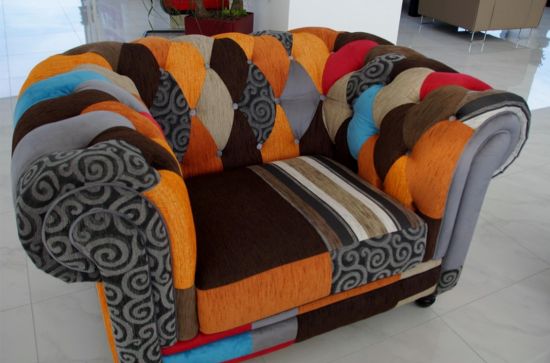Textile Trends in Upholstered Furniture
Posted on 15 Jul, 2025

Textiles are central to upholstered furniture, the fabric chosen for a sofa, chair or bench can define the atmosphere of a space while also affecting comfort and durability.
With changing lifestyles and greater awareness of material choices, fabric trends are shifting towards both visual impact and practical performance. Designers now face growing demand for sustainable materials, bold textures and long-lasting finishes that meet modern needs.
Sustainability Driving Material Choices
Nowadays, choosing fabrics for upholstered furniture requires careful consideration of sustainability. Customers and manufacturers alike are looking for materials that are recyclable, biodegradable or responsibly sourced as environmental impact becomes more widely recognised. This change promotes the use of natural fibres like organic cotton, hemp, linen and wool.
Additionally, recycled textiles are becoming more popular, especially those manufactured from post-industrial waste and recycled plastic bottles. These materials are long-lasting without sacrificing their environmental qualities. To further lessen their environmental impact, a lot of suppliers are also implementing water-saving methods and low-impact dyeing procedures.
Working with sustainable textiles is not only the moral choice for furniture designers; it's also a calculated reaction to consumer demands and market trends. The focus is on producing long-lasting, aesthetically pleasing pieces that are consistent with broader ideals of environmental responsibility.
The Return of Texture and Tactility
Upholstered furniture is seeing a significant resurgence of tactile textiles. More often, materials like chenille, velvet and boucle are being used to give interior spaces depth and softness. These textiles evoke a feeling of cosiness and warmth, which is especially pleasing in modern home furnishing where the colour scheme frequently leans towards minimalism.
Clean-lined furniture complements textured textiles, which provide contrast without overpowering the design. For instance, velvet adds richness with its smooth, light-reflective finish, while boucle adds subtle interest with its looped surface. These decisions improve a space's sensory experience in addition to its aesthetic appeal.
Bold Colours and Statement Patterns
Vibrant colours and striking patterns are also becoming more common. Particularly in otherwise neutral spaces, rich colours like mustard, navy, rust and deep green are commonly used to make furniture stand out. These hues provide warmth and individuality without requiring drastic structural adjustments.
Large-scale patterns are becoming more popular in addition to solid colours. Organic motifs, geometric prints and abstract patterns are used to draw attention to focal points in a space and produce visual impact. These decisions enable local furnitures to become a statement rather than just a background element.
This trend gives design a means to infuse projects with vitality and uniqueness. Expressive textiles can add confidence and style to any interior, whether it's through a single striking accent chair or a patterned sofa.
Performance Fabrics in Residential Settings
The demand for performance fabrics has grown beyond commercial use and into everyday homes. These materials are designed to resist stains, repel moisture and withstand daily wear, making them ideal for busy households with children or pets.
Many of today’s performance fabrics are indistinguishable from standard textiles in terms of appearance and softness. Options include solution-dyed acrylics, polyester blends and advanced microfibres, which combine practicality with a wide range of colours and textures. UV-resistant properties are also a consideration, particularly for furniture placed near windows or in sunrooms.
By using performance fabrics, we can meet the practical needs of modern living without compromising on style. This balance between form and function supports long-lasting interiors that continue to look good with minimal upkeep.
Shaping the Future of Fabric in Furniture Design
Textile trends in upholstered furniture highlight the balance between style, comfort and sustainable design. From eco-friendly materials to bold patterns and performance fabrics, these developments reflect changing consumer needs and advances in technology. If you stay informed about fabric innovations you can create pieces that are both attractive and practical, meeting the demands of modern living.
For professionals seeking to advance their careers in the design and furniture industries, Careers in Design provides access to opportunities aligned with emerging trends. Contact us on 01920 486125 to discover how to develop skills and connect with roles that can shape the future.
Back to blogPosted in: Furniture Design | Tagged: careers in design jobs furniture trends upholstered furniture
